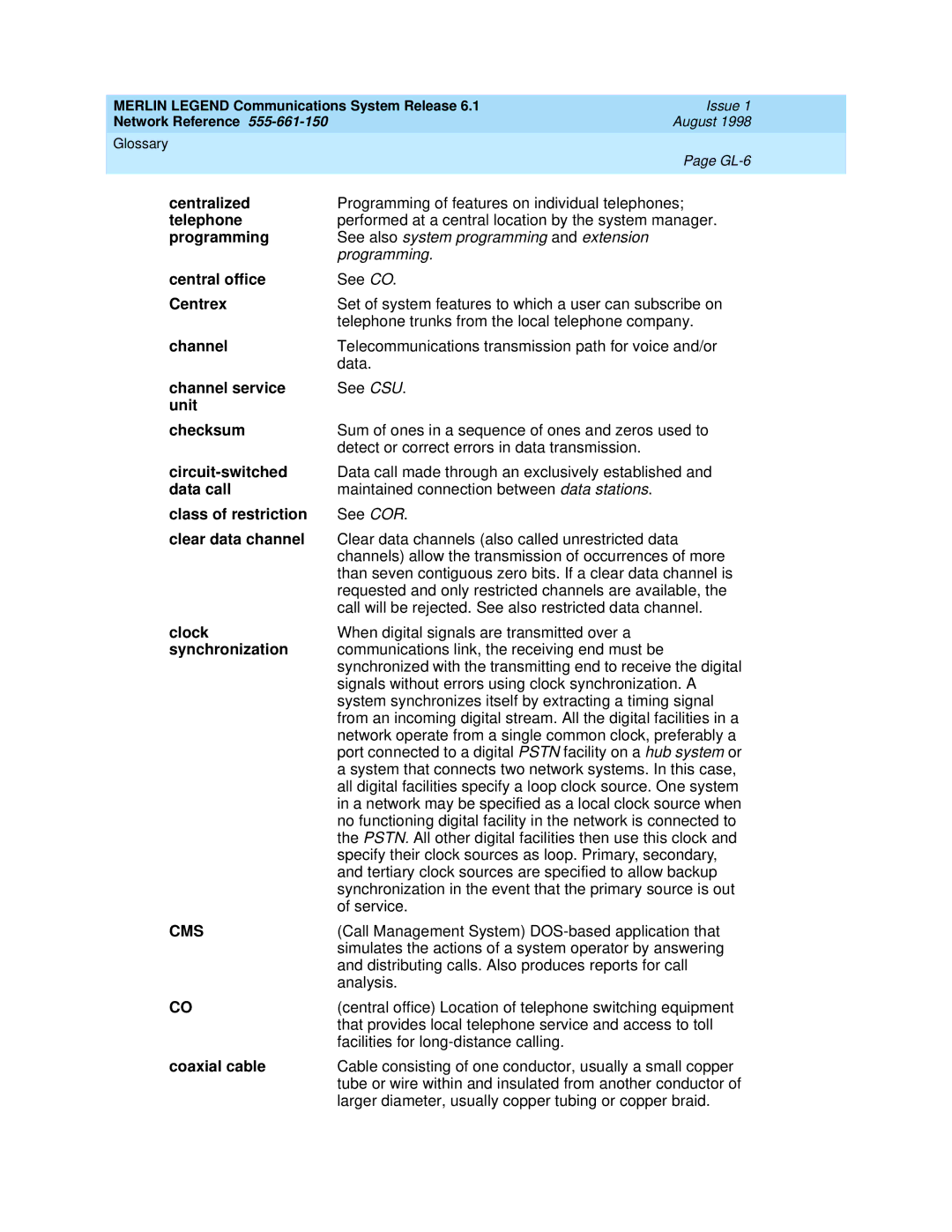MERLIN LEGEND Communications System Release 6.1 | Issue 1 | |
Network Reference | August 1998 | |
Glossary |
|
|
| Page | |
|
|
|
centralized | Programming of features on individual telephones; |
|
telephone | performed at a central location by the system manager. | |
programming | See also system programming and extension |
|
| programming. |
|
central office | See CO. |
|
Centrex | Set of system features to which a user can subscribe on | |
| telephone trunks from the local telephone company. |
|
channel | Telecommunications transmission path for voice and/or | |
| data. |
|
channel service | See CSU. |
|
unit |
|
|
checksum | Sum of ones in a sequence of ones and zeros used to | |
| detect or correct errors in data transmission. |
|
Data call made through an exclusively established and | ||
data call | maintained connection between data stations. |
|
class of restriction | See COR. |
|
clear data channel | Clear data channels (also called unrestricted data |
|
| channels) allow the transmission of occurrences of more | |
| than seven contiguous zero bits. If a clear data channel is | |
| requested and only restricted channels are available, the | |
| call will be rejected. See also restricted data channel. |
|
clock | When digital signals are transmitted over a |
|
synchronization | communications link, the receiving end must be |
|
| synchronized with the transmitting end to receive the digital | |
| signals without errors using clock synchronization. A |
|
| system synchronizes itself by extracting a timing signal | |
| from an incoming digital stream. All the digital facilities in a | |
| network operate from a single common clock, preferably a | |
| port connected to a digital PSTN facility on a hub system or | |
| a system that connects two network systems. In this case, | |
| all digital facilities specify a loop clock source. One system | |
| in a network may be specified as a local clock source when | |
| no functioning digital facility in the network is connected to | |
| the PSTN. All other digital facilities then use this clock and | |
| specify their clock sources as loop. Primary, secondary, | |
| and tertiary clock sources are specified to allow backup | |
| synchronization in the event that the primary source is out | |
| of service. |
|
CMS | (Call Management System) | |
| simulates the actions of a system operator by answering | |
| and distributing calls. Also produces reports for call |
|
| analysis. |
|
CO | (central office) Location of telephone switching equipment | |
| that provides local telephone service and access to toll | |
| facilities for |
|
coaxial cable | Cable consisting of one conductor, usually a small copper | |
| tube or wire within and insulated from another conductor of | |
| larger diameter, usually copper tubing or copper braid. | |
Page 326
Image 326
